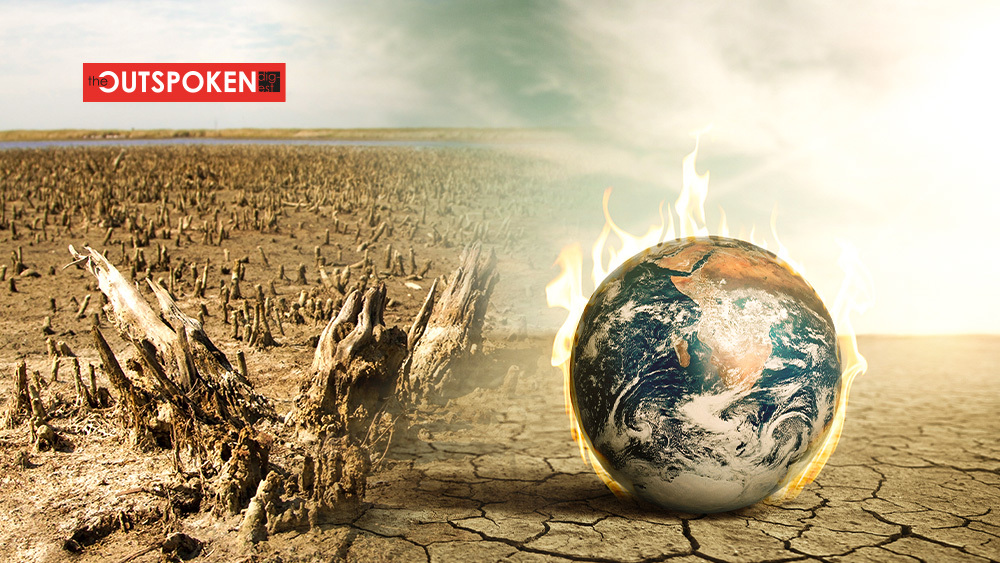Global climate change may be the most significant problem ever faced by humankind. Global climate change, also called global warming or the greenhouse effect can convey mild or gentle warming, however, a rise of just a few degrees in the average temperature of the earth can result in large-scale regional weather patterns. Global warming is not just about warming!
An indicator of global warming is the earth’s average global temperature. It was about 15 degrees in the twentieth century however it has increased in recent years due to the increase in greenhouse emissions.
The alarming rise in average global temperature has led to a surge in extreme weather events with heat waves becoming more frequent, prolonged, and intense.
This summer season the world braces itself for upcoming heat waves under the unforgiving grip of global warming.
Let’s get into the science of what is really happening.
The greenhouse effect is a term that refers to the retention of infrared radiation by certain gases in the atmosphere. This mechanism is essential for life on Earth, without it we wouldn’t be enjoying the warm weather and Earth would be a freezing planet. However, what has recently been happening is rapid, unwanted increases in the atmosphere’s heat retention ability. The main contributors to global warming are carbon dioxide, methane, nitrox dioxide, and CFCs. Each gas has a different heat retention power, where CFCs can be 15000 more powerful than carbon dioxide in terms of heat retention.
The effects of global warming are becoming more and more obvious as carbon emissions increase, and greenhouse gases trap more heat within the Earth’s atmosphere. People around the world, from densely populated urban areas to remote regions, are preparing for a potentially hazardous summer, with high temperatures posing severe dangers to human health, ecosystems, and vital infrastructure.
Millions of people have been suffering in temperatures and humidity levels way beyond “normal” for days on end due to the extreme heat that has been shattering records across Europe, Asia, and North America.
In recent days, the heat index in the Middle East temperature reached 66.6 degrees Celsius which surpassed or approached levels deemed to be the maximum that the human body can take. The human body has its own cooling system, and when the heat of the day causes your body temperature to rise, sweating is a major cooling mechanism. However, when the heat is too intense and the humidity is high, it can be challenging to cool down. Beyond the wet-bulb temperature of 32 °C (90 °F), which is equal to a heat index of 55 °C (131 °F), even people who are accustomed to high temperatures cannot engage in routine outdoor activities. Prolonged extreme heat exposure can result in heat stroke, a life-threatening problem that requires immediate and rapid cooling and medical treatment.
Global warming is not just bout warming.
The alarming news is that due to global warming, studies have shown that in the next years, heat waves might become more severe. Global warming is not just about warming, with every passing year, we witness record-breaking temperatures and observe the devastating consequences that heat waves can inflict. From droughts and wildfires to strain on energy systems and disruptions in food production, the heat waves’ ripple effects are far-reaching and, often, irreversible. There is also a huge concern about melting polar ice caps resulting in rising sea levels which can lead to flooding of coastal regions and displacement of populations. This can cause further environmental and economic damage and even create new conflicts. Global warming must be addressed now in order to reduce the devastating effects of extreme heat.
What we can learn.
It is crucial to be armed with knowledge and awareness about the impacts of global warming and the actions that can be taken to safeguard ourselves and our planet. We must educate ourselves and others on these issues and strive to implement sustainable practices in our daily lives. We all should do our part to reduce our carbon footprint, such as using renewable energy sources, practicing energy efficiency, and reducing our consumption of single-use items. Every small action count in the fight against climate change.
References
Cooper, C.D. and Alley, F.C. (2015) Air Pollution Control: A design approach. New Delhi, India: Scientific International.








